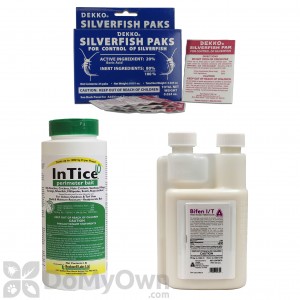Firebrats Identification & Biology
By DoMyOwn staff
Physical Appearance
- Firebrats have long, slender, dull-gray bodies.
- Body is broad near the head, gradually tapering near the tail.
- Firebrats do not have wings.
- Firebrats are about ½ to 1 inch long.
- Abdomen has three filaments extending from it.
Behavior & Habitat
Firebrats are rarely found outdoors, bur rather prefer moist, hot places such as boiler rooms and around ovens, hot-water heaters and pipes. Firebrats may also be found near food sources including book shelves, behind baseboards and wallpaper, and around window and door frames.
Feeding Habits
Firebrats will eat almost anything, including wallpaper paste, flour, starch, dried beef, gum, paper, glue, rayon, sugar, cotton, linen, silk, breakfast cereal, and mold.
Life Cycle
Adult female firebrats begin laying eggs at about 1½ to 4½ months of age, under conditions of 90°F to 106 °F. Female firebrats can lay up to 195 eggs in a lifetime. Nymphs hatch after an incubation period of about two weeks. The complete life cycle of a firebrat may last only 2 to 4 months, resulting in several generations each year.
Damage
Firebrats are pests mostly because of their diet. While firebrats will not physically harm humans or animals, they will damage wallpaper, book bindings, paper goods and some dry food. Firebrats may also eat small holes in fabrics including linen, cotton, and silk.
Prevention
- Practice good sanitation to help prevent further firebrat population growth
- Use of a residual pesticide such as Suspend SC will help control firebrats
- Remove old papers, books, boxes, and clothes from storage areas. This will aid in the control process by removing food sources and hiding places.
- Try to eliminate excess moisture. This can be accomplished by fixing leaky pipes, ventilating attics and other closed rooms, eliminating standing water, and using a dehumidifier.
Professional Products for Firebrat & Silverfish Control:
View additional Silverfish and Firebrat Control products
For more detailed information on Firebrat prevention and control, see How to Get Rid of Firebrats & Silverfish.
2 of 2 people found this article informative and helpful.
